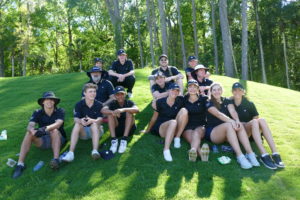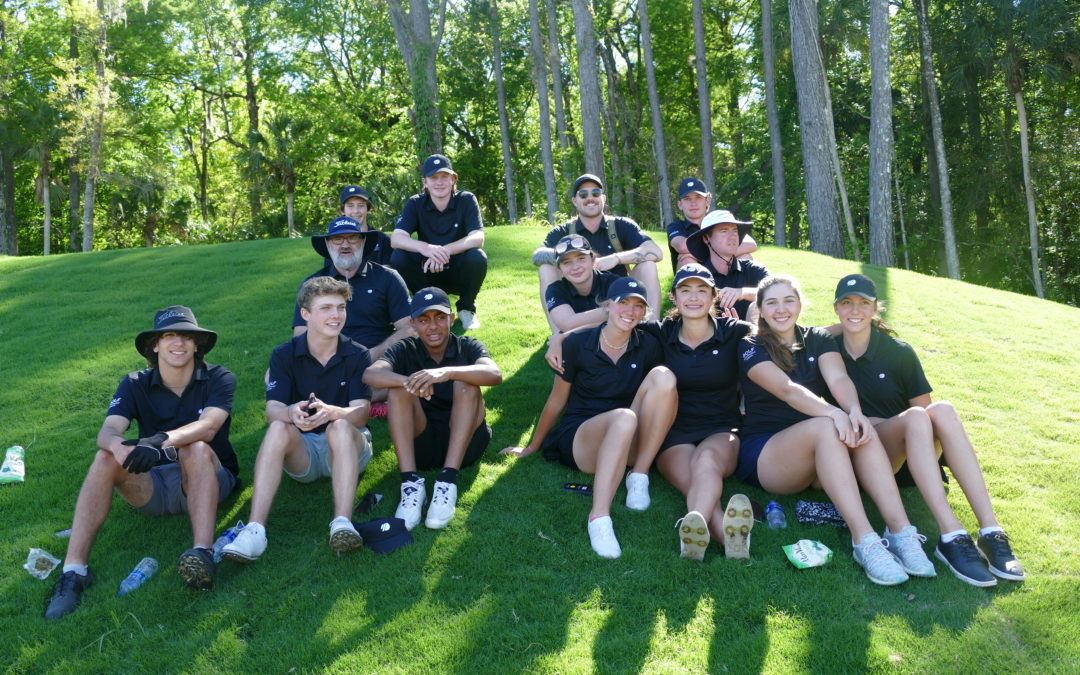When you are going on an official or unofficial visit to a college campus, getting to know the college golf team will help you make your final decision on where to spend those four years.
While important, it’s not always about the actual players on the team; the team setup will give you a good idea if this college golf program fits your needs.
Below are six observations to make before or during your visits that can also serve as great questions for the college coach. From determining your odds of playing to seeing how the team can benefit your career afterwards, take note of these factors.
1. College Golf Team Size and Matriculation

While the college golf recruiting process is fluid, most coaches have an average team size they tend to stick to over the years. Knowing how big the team is will allow you to see what your chances of playing are; just because you’re on the roster doesn’t mean you’ll necessarily travel to every tournament to compete.
For example, if the college golf team is made up of 6 people and 5 players will compete, you have a much better chance of traveling than if you were competing against 8 or 9 other players for those spots.
Being aware of class sizes within the team (as well as your own!) will also give you an idea of what your four years could look like. Will there be a large senior class when you’re a freshman? Or how about no seniors that year? This matriculation could affect what the incoming class sizes after you could look like.
2. College Golf Rankings and Scoring Averages
Men’s NCAA golf rankings and women’s college golf rankings are one of the data points you’ll want to research before your visit. If the college golf program you’re visiting ranks well in their conference, you can bet it’ll be highly competitive to qualify for tournaments within your team.
No matter how the team ranks, you’ll also want to follow the team’s tournament results to see the scoring average. Playing in college golf tournaments is different from junior golf tournaments in that the golf courses are longer; take that into consideration when comparing your scores to theirs.
There’s no wrong path to take – if you want to be a big fish in a small pond, those options are available. If you want to be a small (or big!) fish in a big pond, you can do that as well if the offer’s there. Being aware of NCAA women’s golf and men’s college golf rankings will help you define how you want your college experience to play out, with golf and beyond.
3. College Golf Tournament Qualifying Process
Each college golf coach has a different method for determining the traveling team. While the basics of playing 18 or 36 holes over the weekend is common, how does the golf coach ultimately make his or her decision?
Some college coaches may take the top four scores from the qualifying rounds and fill that last spot with a coach’s pick. Others may choose purely by the numbers. Another question to ask is about alternates; depending on the division, the college coach may be able to bring one or two extra players to compete as individuals, giving you even better odds to travel.
4. College Golf Coach Involvement
Another factor that is unique to each college golf program is how involved the coach is in the day-to-day operations. Are you looking for a college golf coach who can help you with your golf swing and mental game, or are you expecting a head of operations who organizes the practices and traveling but mainly stays out of the technical side of the game?
Both systems work depending on what you’re looking for – perhaps you’re in search of continued growth and hope to find that in your college golf program. Or maybe you have a swing coach at home you’re dedicated to and want to stay on that track. Of course, there are also options that fall on the spectrum between these extremes where the coach is as involved as you want them to be.
5. College Golfer Compatibility

A less tangible feeling to factor in is how compatible you feel with the college golf team when you meet them. While official and unofficial visits can certainly feel intimidating at first, the coaches and players will want you to feel comfortable and to be yourself because they want to make sure you’re a good fit for their team, too.
Getting to know the team can be about asking them anything from their majors to if they live together. College teams spend plenty of time together, especially golfers. Does the team do everything outside of golf together as well or do the players branch out outside of the athletic community? Again, there’s no wrong answer here, and knowing the team dynamic will give you a better idea of what your experience will look like.
6. College Golf Team Alumni Engagement
While not a common question or topic of discussion, talking to the college golf coach about their alumni engagement will provide with you clarity around two important factors: what your network will look like career-wise after graduation and if the players enjoyed their college golf experience enough to stay involved with the program.
If you have found a college golf team whose alumni are consistently giving back to the program, whether it’s through donations or career opportunities, that’s a great sign. Not only can you benefit while you’re playing on the team, but you’ll also be able to lean on your older teammates – even those you never competed with – as mentors.
The entire college golf recruiting process can be tough to navigate, but with these tips of what to look for in a college golf team, Junior Golf Hub feels confident you’ll be able to start defining what you want your college experience to look like and find the program that best fits your needs.

